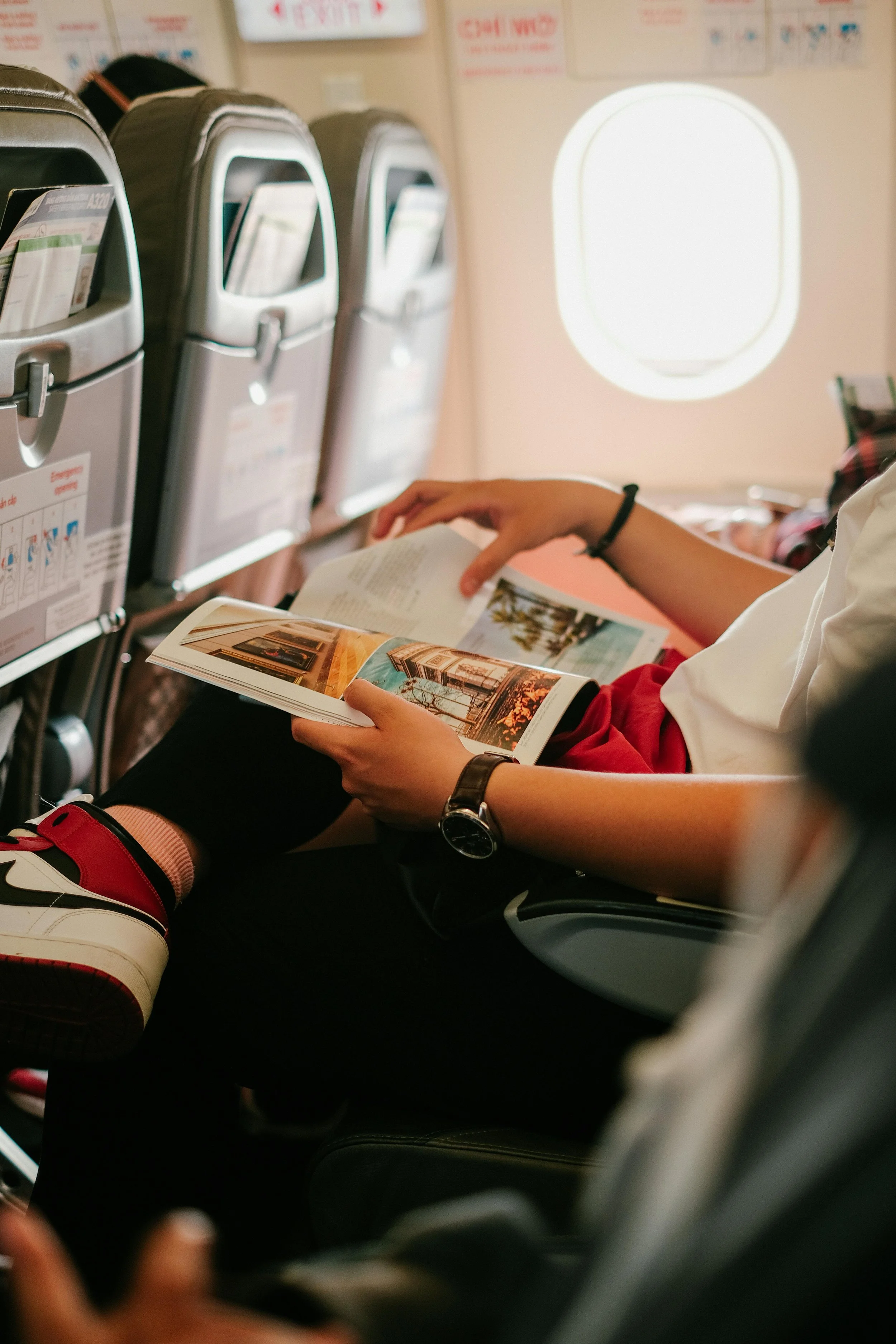Preventing Vein Issues on Long Flights
Long flights are hard on your veins. Hours of immobility, dry cabin air, and cramped seating combine to slow blood flow from your legs back to your heart. For people with varicose veins, a history of blood clots, pregnancy, recent surgery, or other risk factors, that slowdown in your activity can translate into leg swelling, pain, superficial phlebitis, or, in rare but serious cases, deep vein thrombosis (DVT). The good news: targeted preparation and in-flight habits dramatically reduce your risk.
Why flights strain your veins
When you sit with your hips and knees bent for long stretches, the calf muscle, your body’s “second heart” that normally pumps blood upward, goes mostly offline. Add low cabin humidity (dehydration thickens blood), alcohol (vasodilator + diuretic), and the pressure of a seat edge on the back of your thighs, and venous return slows. For already weakened valves (venous insufficiency) or dilated veins, this environment can exacerbate pooling and inflammation.
Who’s most at risk?
While anyone can develop a clot, talk to your clinician before flying if you have or recently had:
Prior DVT/PE or known clotting disorder
Active cancer or current hormone therapy (including estrogen-containing birth control)
Pregnancy or postpartum status
Varicose veins with significant symptoms or chronic venous insufficiency
Recent major surgery or trauma (especially within 4–6 weeks)
Obesity, smoking, or prolonged immobilization
Age > 60, especially with additional risk factors
Before you fly: build your prevention plan
Think of this as your pre-flight checklist:
Book an aisle seat when you can, making it easier to stand and walk regularly.
Purchase correctly sized graduated compression stockings (15–20 mmHg or 20–30 mmHg if your clinician recommends) ahead of time, and practice putting them on.
Hydrate well the day before and the day of travel. Aim for pale-yellow urine.
Pack movement tools: a small massage ball, a resistance band, or even a tennis ball for calf and foot mobilization.
Discuss individualized prophylaxis with your provider if you are high-risk (e.g., temporary anticoagulation, adjusted dosing of existing meds).
Avoid sedatives and excessive alcohol that keep you immobile or dehydrated.
Wear loose, non-restrictive clothing around the waist and thighs.
During the flight: what to actually do
Here’s how to implement the plan while you’re cruising at 35,000 feet:
Move every 60–90 minutes. Stand, walk the aisle, or do 20–30 calf raises next to your seat.
Micro-movements in your seat: ankle pumps, alphabet-writing with your toes, and resisted knee extensions with a looped band.
Keep drinking water. A simple rule of thumb: ~8 oz (240 ml) every hour you’re awake in the air.
Limit alcohol and caffeine. Both can dehydrate you.
Elevate your feet when possible. Even a small footrest helps reduce venous pressure.
Avoid crossing your legs for long periods.
A sample 10-hour flight movement script
At boarding: Put on your compression stockings, stow bags to keep legroom open, and run through 20 ankle pumps.
Hour 1: Drink water, perform 20 seated heel raises.
Hour 2: Walk the aisle once, do 15–20 calf raises.
Hour 3: Seated ankle circles (20 each direction), gentle hamstring stretch while seated.
Repeat the Hour 1–3 cycle until landing.
Compression stockings: how to choose and wear them
Compression works when it’s the right pressure and fit. Graduated stockings are tighter at the ankle and looser up the leg, promoting upward flow. Measure your ankle, calf, and (if thigh-highs) thigh circumference first thing in the morning when swelling is minimal. Put them on before the flight, not after your legs have already puffed up.
If you have peripheral arterial disease, uncontrolled heart failure, skin infection, or severe neuropathy, check with your clinician before using compression.
Medication: when is it warranted?
Routine anticoagulation for every traveler isn’t necessary. However, if you have multiple risk factors or a recent clot, your clinician may recommend low-dose anticoagulation (e.g., LMWH) or adjust current therapy for the travel window. Do not self-start aspirin or any blood thinner without medical guidance; benefits and risks differ by person.
Red flags after landing
Most flight-related leg swelling resolves within a day or two. Seek urgent medical care if you notice:
One-sided leg swelling, warmth, or redness
Unexplained calf pain or tenderness, especially when walking or dorsiflexing the foot
Sudden shortness of breath, chest pain, or coughing up blood (possible pulmonary embolism)
If you already have venous disease
For those with varicose veins, chronic venous insufficiency, or previous ulcers, long flights can cause flare-ups. Beyond compression and movement, consider scheduling a pre-travel vein check to optimize your plan. Post-trip, if swelling or discomfort lingers, book a follow-up; an ultrasound can rule out clots and assess whether a definitive procedure (e.g., ablation, sclerotherapy) could reduce future travel risk.
The bottom line
Long flights don’t have to equal leg heaviness, swelling, or anxiety about clots. With compression, hydration, strategic movement, and individualized medical advice, most travelers can significantly cut their risk and fly more comfortably. If you’re unsure where you stand on the risk spectrum, or you’ve had symptoms in the past, schedule a quick consultation before you go wheels up. Your veins (and your peace of mind) will thank you.
Elmore Medical Vein & Laser Treatment Center is the premier vein specialty medical practice in the Central Valley. Dr. Mario H. Gonzalez and his staff offer years of experience and medical expertise that you won’t find anywhere else. Contact us to set up a consultation appointment.

